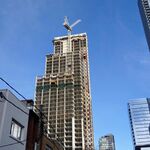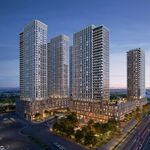Sunnyside
Active Member
I for one would much rather see these corridors start with BRT and then be upgraded later on as needed, than start with LRT and throw out the idea of upgrades forever. Eg east, Jane, and Finch all come to mind. Some of these corridors may eventually become redundant with GO expansion, like Dufferin, but I am not really convinced of that. BRT is a nice middle ground where we can gauge how much demand there is on all these corridors over the next decade and then upgrade accordingly to LRT or light metro depending on the route.
I agree with others that the Sheppard BRT is likely to be replaced shortly and may be the only one not worth implementing. It would make Line 4 even more redundant if the lanes continue over the subway. Maybe focus on it in one direction, ie sending it further east to meet at Malvern and cut the western segment. We can prioritize Sheppard West's subway extension instead, answering the question of which to do first.
Bathurst is interesting. Obviously the demand is there, but I would have suspected a goal would be to shift most travel e/w to Line 1 instead. Putting a BRT would likely drive current ridership even higher and enforce this pattern, but I see it hard to justify upgrading Bathurst to rail north of Bloor and south of Sheppard given its proximity to the University-Spadina Line.
I too wish this were expanded to other corridors; primarily Steeles, Kingston rd, Victoria Park/Warden, and Kipling. Tertiary options would include Bayview (if we're doing Bathurst, may as well), Lawrence, and Lawrence East.
I agree with others that the Sheppard BRT is likely to be replaced shortly and may be the only one not worth implementing. It would make Line 4 even more redundant if the lanes continue over the subway. Maybe focus on it in one direction, ie sending it further east to meet at Malvern and cut the western segment. We can prioritize Sheppard West's subway extension instead, answering the question of which to do first.
Bathurst is interesting. Obviously the demand is there, but I would have suspected a goal would be to shift most travel e/w to Line 1 instead. Putting a BRT would likely drive current ridership even higher and enforce this pattern, but I see it hard to justify upgrading Bathurst to rail north of Bloor and south of Sheppard given its proximity to the University-Spadina Line.
I too wish this were expanded to other corridors; primarily Steeles, Kingston rd, Victoria Park/Warden, and Kipling. Tertiary options would include Bayview (if we're doing Bathurst, may as well), Lawrence, and Lawrence East.




